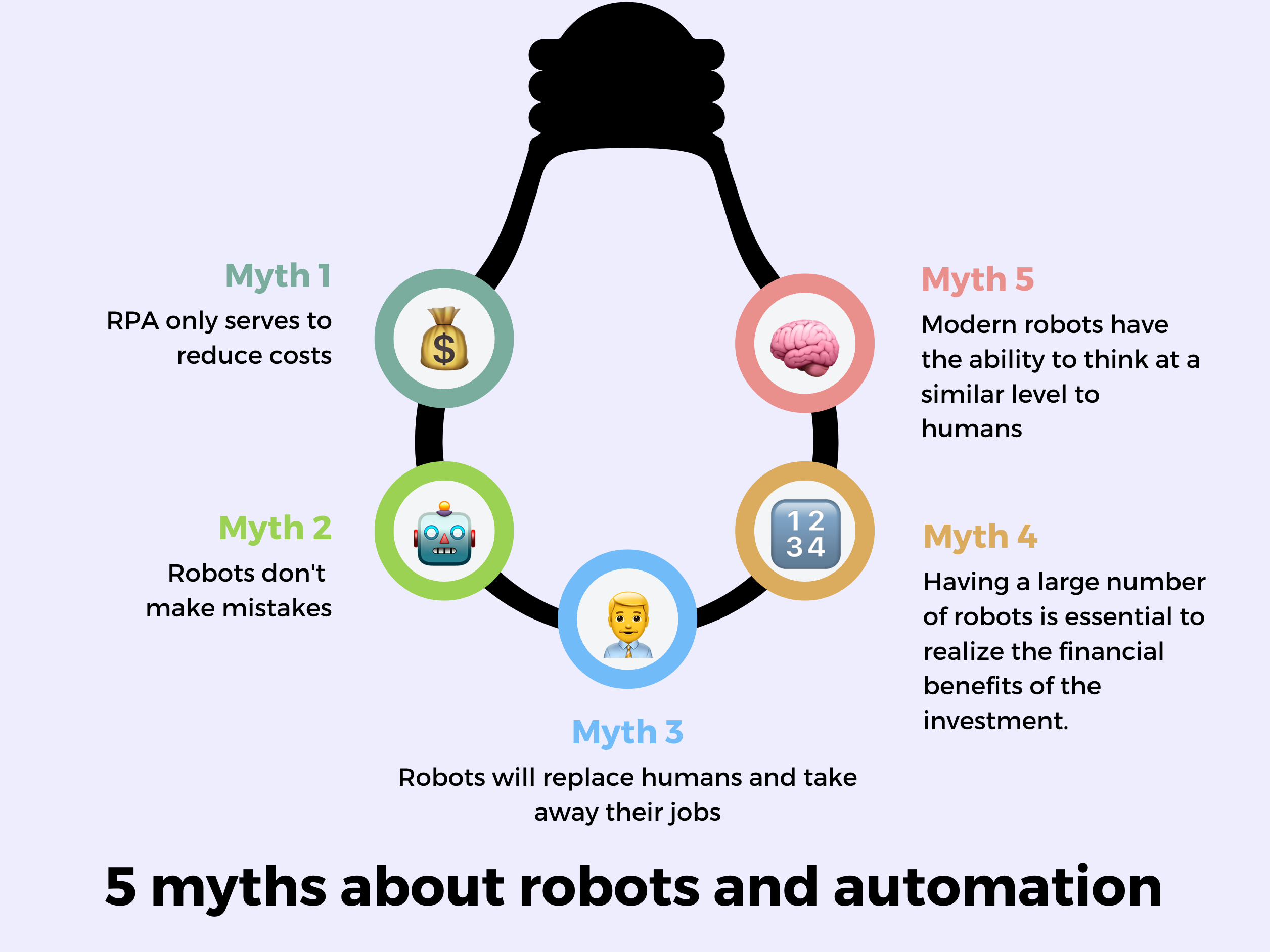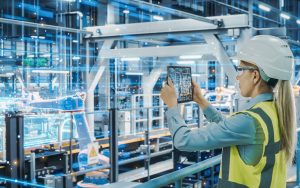Today we’re debunking the 5 most popular myths about robots and RPA automation!
Myth 1: RPA is only for cost reduction 💰.
Cost reduction is the main advantage of RPA, but it’s not the only reason companies choose to implement it. RPA can also be used to improve productivity, eliminate human error, and free employees from monotonous work and encourage them to focus on more strategic and creative work.
Myth 2: Robots don’t make mistakes 🤖.
Although robots are very good at following instructions, they are not infallible. They can make mistakes, for example, when they encounter an exception to the rules they know. However, these errors can be easily detected and corrected. A robot can be programmed to signal any mistakes it makes.
Myth 3: Robots will replace humans and take away their jobs 👨💼
RPA aims to automate repetitive and monotonous tasks that were previously performed by humans. This allows employees to focus on more valuable and creative tasks that require skills, such as data analysis, process management or customer interaction. Automation can lead to the evolution of occupations and the acquisition of new competencies by employees
Myth 4: Having a large number of robots is necessary to realize financial benefits from the investment 🔢.
RPA can be implemented with a small number of robots. In fact, many companies start with one or just a few robots and then scale up as needed. This is because RPA is a highly scalable technology.
Myth 5: Modern robots have the ability to think at a similar level to humans 🧠.
Robots perform programmed tasks and instructions according to specific rules. Although they can perform complex sequences of actions, they are limited to actions based on algorithms and rules. RPA robots have no awareness or ability to think creatively, understand context or make decisions based on subjective factors.
Discover facts about robot errors, the future of human jobs and the scalability of RPA.






